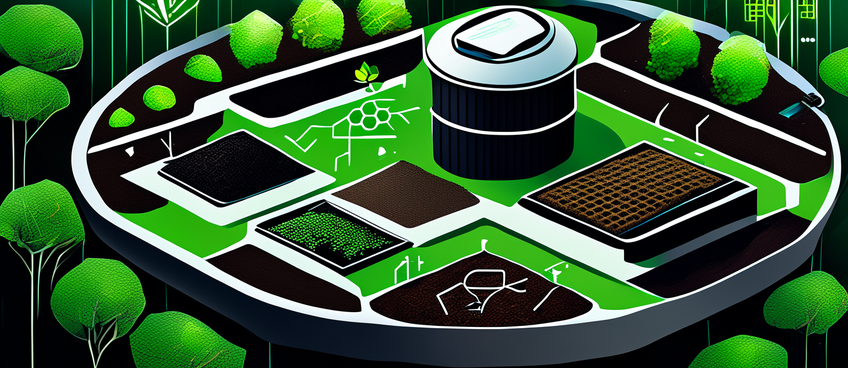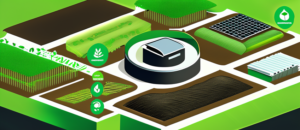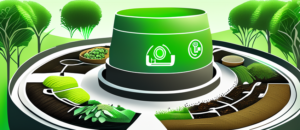Technological Advancements in Composting Techniques: The confluence of necessity and innovation engenders advancements that reshape our world. In the sphere of waste management, composting has established itself as a cornerstone of recycling and sustainability. However, it’s the intersection of technology with these composting techniques that augments our efforts towards responsible waste management. This exegesis will unpack various innovations in composting techniques, examining traditional methods and their limitations, before delving into the intersection of technology and composting.
Traditional Composting Methods and Their Limitations
Traditional composting a process grounded in the principles of biology and chemistry harnesses the natural decomposition process to convert organic materials into nutrient-rich soil. Albeit effective, traditional composting presents its slew of drawbacks. For instance, it can be time-consuming and labor-intensive, often lacking in consistency, due to the variability in factors such as temperature, moisture, and nutrient ratios. Such pitfalls underscore the exigency for technological intervention in composting processes.
The Rise of Technological Innovations in Composting
Just as Prometheus brought fire to mankind, technological advancements illuminate the path towards efficient composting. Innovations such as smart monitoring systems, automated composting machines, and artificially intelligent models serve to amplify the composting process, endowing it with consistency, efficiency, and scalability. Technology, thus, is not simply an addition to composting but a means of transcending its limitations.
Smart Monitoring Systems for Composting
The advent of the Internet of Things (IoT) and advanced sensor technologies lend themselves well to the composting process. They enable real-time monitoring of critical parameters, like temperature, moisture, and oxygen levels. Such instantaneous data provides opportunities for dynamic adjustments, optimizing compost production while minimizing waste and energy expenditure.
Automated Composting Systems
Automation in composting systems presents a novel approach to solving the challenges of traditional methods. Robotic arms stir the compost pile with precision, while conveyor belts and sorting mechanisms streamline the separation of compostable materials. Automated systems not only increase efficiency but also enhance the overall quality of the compost produced.
Aerated Static Pile Composting
Under the rubric of technological composting methods, Aerated Static Pile (ASP) composting emerges as a commendable contender. ASP leverages forced aeration via blowers and pipes to improve airflow and expedite the composting process, simultaneously ensuring that the compost pile does not become anaerobic, thereby maintaining the viability of aerobic bacteria essential for effective decomposition.
Vermicomposting and High-Tech Worm Farms
Vermicomposting, a symbiotic collaboration between technology and earthworms, accelerates organic waste decomposition. High-tech worm farms offer an environment where conditions can be fine-tuned to ensure maximum efficiency. These advancements breathe new life into vermicomposting, making it a highly efficient and effective composting method.
In-Vessel Composting Technologies
In-vessel composting systems, a prime exemplar of technology’s influence on composting, encapsulate the composting process within a controlled environment. They provide precise control over parameters like temperature and humidity, offering a consistent and efficient process unaffected by external conditions, thereby elevating the efficacy of composting techniques.
Bokashi Composting Systems
Bokashi composting is an innovative process that uses beneficial microbes to ferment organic waste. Technological advancements have refined Bokashi systems, ensuring the microbes optimal activity, accelerating the composting process and making it a valuable addition to the composting repertoire.
Utilizing Biogas from Composting
Composting’s utility transcends beyond waste management, extending into the domain of renewable energy. Advanced composting techniques enable the extraction and harnessing of biogas, a byproduct of composting, which upon refinement yields methane a viable alternative to traditional fossil fuels.
Composting in Urban Environments
Urban landscapes pose unique challenges for composting, given the spatial constraints and massive volumes of waste. Technology, however, furnishes compact composting systems and community composting initiatives, enabling city-dwellers to contribute to the green cause and fostering a sense of urban gardening camaraderie.
Artificial Intelligence in Composting
Artificial Intelligence (AI) has permeated the composting sphere, infusing it with predictive models for optimal outcomes. AI algorithms facilitate informed decision-making, automating various composting processes, and overall boosting efficiency, highlighting the transformative power of technology.
Composting for Large-Scale Agriculture
Technological advancements in composting have far-reaching implications for large-scale agriculture. As a key component of sustainable agricultural practices, compost improves soil health and productivity. Industrial composting techniques, augmented by technology, therefore, hold immense potential for global food security.
Composting for Waste Diversion and Recycling
Composting plays an instrumental role in waste diversion strategies, turning organic waste into nutrient-rich soil and mitigating landfill dependency. As an emblem of circular economy, it also interweaves with the recycling industry, providing an eco-friendly alternative to synthetic fertilizers.
Integration of Green and Brown Materials in Composting
Balancing ‘green’ (high-nitrogen) and ‘brown’ (high-carbon) materials in composting is crucial for optimal decomposition. Technology plays a pivotal role in streamlining waste separation and collection processes, ensuring the optimal carbon-to-nitrogen ratio, which is quintessential for successful composting.
Case Studies of Successful Technological Composting Projects
Across the globe, numerous successful composting projects employ innovative technologies, highlighting their viability and efficacy. These instances underline not just the environmental but also the economic viability of technological composting, encouraging its wider adoption.
Conclusion of Technological Advancements in Composting Techniques
The panoply of technological advancements in composting techniques is a testament to human ingenuity. Adoption of these technologies is paramount for sustainable waste management and paves the way for a future where waste is not an issue, but a resource. It is incumbent upon us to continue to support research and development in composting technology, to further refine and perfect these methods.
FAQs
Q1 What is the role of Artificial Intelligence in modern composting techniques?
Ans: Artificial Intelligence plays a significant role in modern composting techniques by providing predictive models for optimal composting outcomes. It aids in real-time decision-making, automating various composting processes, and overall enhancing efficiency.
Q2 How does Bokashi composting differ from traditional composting methods?
Ans: Bokashi composting is an innovative process that uses beneficial microbes to ferment organic waste, making it different from traditional composting. Technological advancements have refined Bokashi systems, ensuring optimal microbial activity and accelerating the composting process.
Q3 Can composting techniques be applied in an urban environment?
Ans: Yes, despite the unique challenges posed by urban landscapes, including spatial constraints and massive volumes of waste, technology furnishes compact composting systems and community composting initiatives that are suitable for urban settings.
Q4 What are the advantages of in-vessel composting technologies?
Ans: In-vessel composting technologies provide a controlled environment for composting, offering precise control over parameters like temperature and humidity. They ensure a consistent and efficient process unaffected by external conditions, hence improving the quality and yield of compost.
Q5 How does composting contribute to large-scale agriculture?
Ans: Composting plays a crucial role in large-scale agriculture. As a key component of sustainable agricultural practices, compost improves soil health and productivity. Technological advancements in industrial composting techniques increase the scale and efficiency of compost production, which holds immense potential for improving global food security.
Our Reader’s Queries
What are the new techniques in composting?
Composting has come a long way, and there are now several methods available to suit different needs. Tumbler Composting is a popular form of hot composting, while Worm Farm Composting, also known as Vermicomposting, uses worms to break down organic matter. EMO Composting, or Bacteria Composting, relies on microorganisms to do the job, and Combination Composting, or Compot Composting, is a mix of different techniques. With these options, it’s easier than ever to turn your food scraps and yard waste into nutrient-rich soil for your garden.
What is the most effective composting method?
Digging a trench or pit a few feet deep is a great way to compost organic waste. Simply fill it with your waste and cover it with at least six inches of soil. The bacteria and worms will quickly get to work breaking down the waste. This method is perfect for small spaces, as you can easily dig a small, deep hole using post hole diggers. Give it a try and watch your waste turn into nutrient-rich compost!
How can composting be improved?
Accelerating the composting process is easy with a few simple steps. Firstly, create a larger pile of organic waste to generate heat, which is essential for nutrient-rich fertiliser production. Secondly, maintain the right balance of brown and green materials. Thirdly, shred everything to speed up the decomposition process. Fourthly, turn your pile over and aerate it to allow oxygen to circulate. Lastly, keep your pile moist to ensure the composting process is not hindered. By following these tips, you can create compost quickly and efficiently.
What is the future of composting?
According to this study, if we keep doing what we’re doing, the U.S. could boost its compost to waste ratio by 18% by 2030. This would cut carbon emissions by a whopping 30 million tons annually and save about 16 billion USD in municipal waste management expenses.



